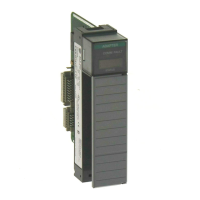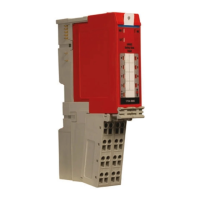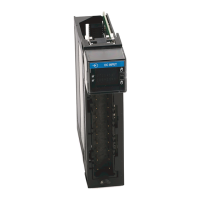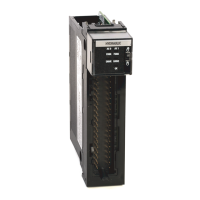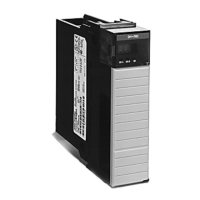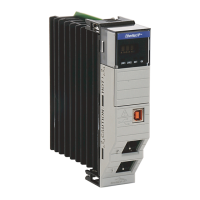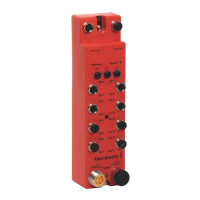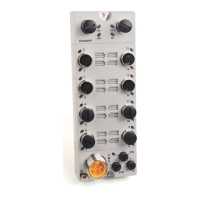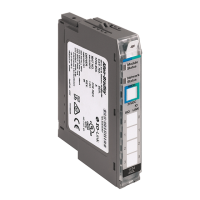
Do you have a question about the Allen-Bradley Rockwell Automation 1734-4IOL and is the answer not in the manual?
| Product Type | Control Unit |
|---|---|
| Series | POINT I/O |
| Catalog Number | 1734-4IOL |
| IO-Link Ports | 4 |
| IO-Link Version | 1.1 |
| SMI (Serial Mapping Interface) | Yes |
| Electronic Keying | Yes |
| Operating Voltage | 24V DC |
| Power Dissipation | 3.5 W |
| Input Channels | 4 |
| Output Channels | 0 |
| Communication Interface | IO-Link |
| Operating Temperature | -20°C to 60°C |
| Manufacturer | Rockwell Automation |
| IO-Link Cycle Time | 2.3ms |
| Current Consumption | 100 mA |
| Isolation Voltage | 50V continuous, basic insulation type. No isolation between I/O channels. |
Explains the manual's scope: installing, configuring, and troubleshooting the IO-Link Master module.
Intended for qualified personnel familiar with Studio 5000, EtherNet/IP, and IO-Link terminology.
Lists related POINT I/O products and documentation available from Rockwell Automation.
Describes the module's capabilities: four channels configurable as IO-Link Master or digital I/O.
Details the product identity, including catalog number, product type, and product name string.
Outlines the module's operational modes: IO-Link Master, digital I/O, mixed, or fallback.
Step-by-step guide for mounting the module's base onto a DIN rail.
Instructions for correctly installing the module into its mounting base.
Procedure for attaching the Removable Terminal Block (RTB) to the wiring base.
Steps to safely detach a mounting base from the DIN rail.
Diagrams and tables illustrating how to wire the module's channels.
Guides users through installing the necessary software profile in Studio 5000.
Explains how to add the module to the Studio 5000 I/O configuration tree.
Describes how Logix tag elements are created based on integration levels.
Explains standard Logix tag element creation for digital I/O channels.
Details the configuration tag for the Master Module, including mode settings.
Defines different user interface roles for IO-Link devices: Observation, Maintenance, Specialist.
Explains integration levels: IODD Advanced, IODD Basic, and Generic.
Steps to set the operating mode for each channel (e.g., IO-Link, Digital Input).
Describes managing IO-Link devices within the Add-on Profile's IO-Link tab.
Procedure for registering IO-Link Device Description (IODD) files.
Steps to associate an IO-Link device with a channel in the Add-on Profile.
How to modify application name, electronic keying, and data input for IO-Link channels.
Explains parameter configuration via the Add-on Profile for IODD Advanced integration.
Details how IO-Link parameters behave offline and online.
How to resolve discrepancies between device and controller configurations using Refresh.
Guide for adding and configuring IO-Link devices that do not have an IODD file.
Using message instructions to read/write parameters for Basic/Generic IO-Link integration.
How to find parameter details within the IODD XML file for message instructions.
Setting input filter times for digital input channels in the Configuration tab.
Defining output states for Program and Fault modes via the Fault/Program Action tab.
Explains module data mapping for sending/receiving I/O data via messages.
Information on accessing and viewing events logged by the IO-Link master stack.
Details on how to retrieve event data via Explicit Messaging.
Enumeration and definition of event conditions specific to the IO-Link master stack.
Explanation of the sequence count assigned to each event.
Details on event type, location, and category.
Shows where recent events are viewable in Studio 5000 Controller Tags.
Information on interpreting module status, network status, and I/O/IO-Link states.
Guide to understanding the meaning of various LED status indicators on the module.
Addresses issues with connection attempts from multiple controllers.
Explains a scenario causing controller faults and a workaround.
Discusses issues with generic devices having zero input/output lengths.
Explains the behavior of the unsigned event sequence count in software.

